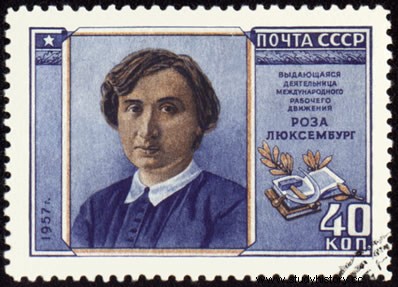
By Tales Pinto
The German Revolution of 1918-1919 is directly linked to the First World War, the divisions that developed within the German Social Democratic Party (SPD) since late 1915 and the Russian Revolution of 1917.
The outbreak of war, with Germany as one of its main protagonists, and the support of much of the SPD for granting war credits to the Second Reich created internal divisions within the party. A minority that grew over the years opposed the granting of war credits, claiming that such a policy only benefited the bourgeoisie of the belligerent countries, by putting the workers of the countries involved in the world conflict to fight among themselves. The basis of this defense was the need to maintain the international ties of the workers.
New parties emerged from the SPD's internal divisions. In January 1917, the Independent German Social Democratic Party (USPD) was formed by the left wing of the SPD, which would try to strengthen workers' actions against the war and for the improvement of the quality of life. Within the USPD was the Spartacus League, led primarily by Karl Liebknecht and Rosa Luxemburg. In addition, there was a group of revolutionary delegates that maintained a certain independence from the party, being formed by Berlin workers who participated in the first workers' movements during the beginning of the First World War.
However, the unfolding of revolutionary actions caused the USPD itself to split, giving rise to a new party formed by the Spartacist League, called the German Communist Party (KPD), formed from from late 1918.
The Russian Revolution of 1917 also exerted considerable influence on German workers and soldiers by creating the feeling of the possibility of carrying out a revolutionary process that would overthrow capitalism. This perspective grew even stronger as the social conditions resulting from hunger and cold, caused by Germany's participation in World War I, hit the population more and more deeply. A large contingent of soldiers began to abandon the war front, weakening the German army.
But the most important feature of the German Revolution of 1918-1919 was the formation of numerous workers' and soldiers' councils in several German cities. As a result of numerous massive strikes and possibly inspired by the Russian soviets, the defenders of power rooted in these councils even proclaimed in November 1918, in Berlin, a Socialist Republic. Several other cities had as their power base, for a few weeks, the workers' and soldiers' councils.
However, the strengthening of workers' movements and the threat to the constituted power made the repression of the German military forces intensify. With the successive defeats in the front line, the power of Emperor William II, of the II Reich, collapsed by the action of the councils, on November 9, 1918. But, later, a Republic emerged led mainly by the Social Democrats of the SPD. Despite defining themselves as a workers' party, the Social Democrats led the repression of workers' and soldiers' councils.
Supporting the action of the Freikorps sought to weaken the grassroots movement of workers. These military bodies were formed after the dismantling of the army, as a result of the defeat in the First World War, from conservative officers and anti-revolutionary military. The Freikorps they even clashed with the mutinous sailors in Kiel, where councils of sailors were formed who dismissed their officers and took their weapons and vessels.
For a number of reasons, the revolutionary movement was weakening. The division between left-wing parties and the lack of a perspective of constitution of an alternative power to the Republic on the part of the workers' and soldiers' councils were pointed out by historians and militants as the reasons for the defeat of the German Revolution of 1918-1919.
In early 1919, attacks by the Freikorps became successful, arresting and killing thousands of workers involved in the struggles. The most notorious cases occurred with Spartacist leaders Karl Liebknecht and Rosa Luxemburg. In prison, they were murdered on January 15, 1919. This wave of repression managed to stop the movement, although struggles for the constitution of republics based on councils emerged in several German locations until May 1919.
The consolidation of the SPD's power in the newly formed Weimar Republic would succeed in putting an end to the revolutionary movement. New struggles would still develop in 1920 and 1921, but without the same force and impetus of the previous years.
________________
* Image credits:svic and Shutterstock
Take the opportunity to check out our video lesson related to the subject:
